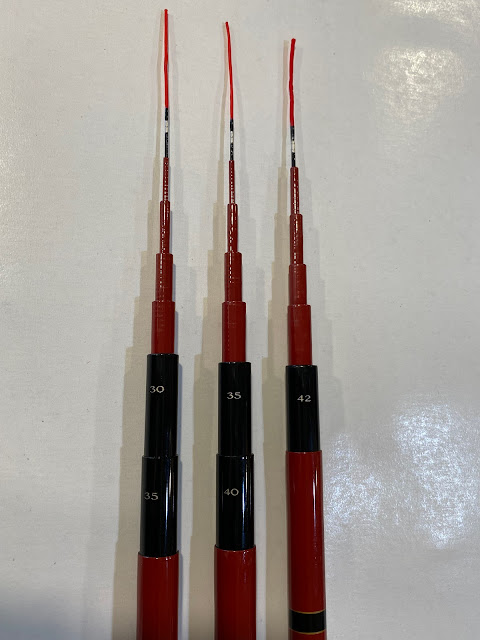If the rod is used frequently in multiple lengths, those areas will wear and the action of casting will amplify that wear and you will be able to feel it and or hear it in your cast.
My chosen style of tenkara is minimalistic, that is, I carry one rod on stream (or honryu) and that's it. I carry a backup line and typically one fly box. I like to choose the longest rod I can for the given water I am fishing. I want a rod that will take me from small head water streams to the largest river and biggest trout. That's what I want but to design a rod for subduing a big trout in heavy flow would not render a very fun rod for a short cast to a small six-inch brookie.
For my chosen tenkara water and trout, it takes at least two rods, if not three fixed length rods to cover the headwater stream through the mainstream and big trout.
Zoom rods are designed to cover a wider variable of reach. Of course, they are designed for some variability in fish size, but zoom rods are designed for more variability in casting length than a fixed length tenkara rod.
Zoom rods target a wider range of casting lengths.
As a side note, the Oni Honryu 395 and 450 are two of the most variable fixed length rods that I have owned and used. Capable of catching a six inch brookie and subduing a 20" trout in current.
But are zoom rods designed to be primarily used at one length? Then pulled longer or nested shorter secondary to the primary design length?
What length or configuration (extended or nested) are zoom rods designed to primarily cast at?
Most zoom rods feel best at their shortest length.
The balance is in favor, the rotational movement is best at their shortest length. Pulling longer, the balance is lost to tip heavy and the rod taxes more of the fisher in the cast.
Rods like the Tenryu TF39TA and the Tenkara USA Sato are comfortable to cast at length all the time.
I choose a zoom rod for its shortest length for the water I am fishing.
I choose the longest rod from my quiver for the water I am fishing but with a zoom rod, that choice targets the shortest length in its zoom configuration.
I keep a fairly small quiver of rods and until I find one better than one in my minimal quiver, I have to get rid of one. In 2019 I bought my first Gamakatsu Suimu EX 500. It is a fantastic rod at its 4.2m (nested length) and super long at it's extended 5m length.
That's a 5m rod!
But I'm not casting it primarily at that length. Just a small percentage of time when I need the extra reach.
A zoom rod is all about the line angle and extra reach we need at times.
For the first season, I used it primarily at 5m for the long lines I use on the river. Casting a 5m rod with a 7m line is a beast. Casting the rod at its 4.2m nested length with a long line is pretty easy even at the end of a long day of large fish fighting.
The Suimu EX 400 is a 4m rod at length, that is a long rod! But at its 3m nested length, it is a finely balanced small stream tenkara rod capable of fishing tight quarters streams. Those streams often open up and I can extend the rod to 4m and get a great fly only cast at a nice distance.
When I make a choice in a zoom rod, I am focusing on the shortest length and using the longer lengths for reach. Sometimes when landing a large trout, I will nest or shorten the zoom sections to help reach the line, this is a minor function and not to be considered as a choice, secondary to choosing a rod.
In choosing a line length for whatever zoom rod I am using; I craft a line slightly longer than the longest length. This way, at the shortest length, I have a long line that is desirable for fighting larger fish. That length protects the tip of the rod by giving you more line to be able to move and or land the fish without closing the curve of the rod tip. At extended longer lengths, the line is at an acute angle and fly first is easier and the presentation stealthier.
Zoom rods are a great choice for tenkara.
They cover a wider variety of stream size, line lengths. There are some special considerations when considering a zoom rod. I suggest asking people that have owned the rod if there is any trouble with the rod as far as wear and tear on all the lengths.
Does the rod hold at each length?
Does it rattle?
Does it perform at its shortest length?
Confused? Yes, it is confusing if you wonder what the rod was designed for.
This is an opinion article on the way I enjoy and use my zoom rods.
Enjoy tenkara your way.




Thank you very much for your thoughtful analysis. As a rookie Tenkara fisher it was certainly helpful.
ReplyDeleteRay, I have used a lot of zoom rods and have studied them in the media from the country of origin. Once I began to look at them with the focus on the shortest length, the rods began to really speak to me.
Delete